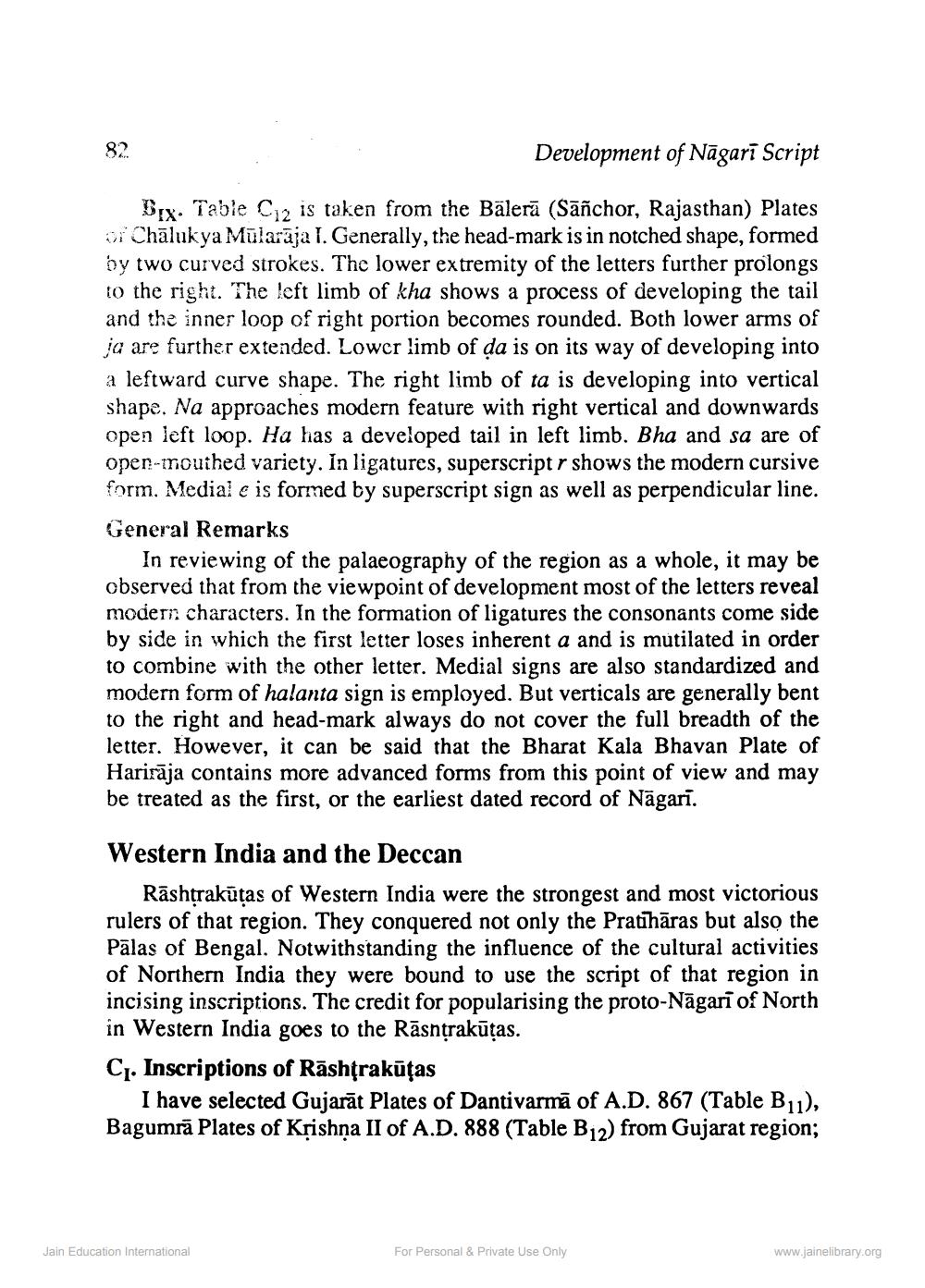________________
82
Development of Nāgarī Script
Brx. Table C is taken from the Bälerā (Sāñchor, Rajasthan) Plates or Chālukya Mülaraja 1. Generally, the head-mark is in notched shape, formed by two curved strokes. The lower extremity of the letters further prolongs to the right. The left limb of kha shows a process of developing the tail and the inner loop of right portion becomes rounded. Both lower arms of ja are further extended. Lower limb of da is on its way of developing into a leftward curve shape. The right limb of ta is developing into vertical shape. Na approaches modern feature with right vertical and downwards open left loop. Ha has a developed tail in left limb. Bha and sa are of open-mouthed variety. In ligatures, superscript r shows the modern cursive form. Medial e is formed by superscript sign as well as perpendicular line. General Remarks
In reviewing of the palaeography of the region as a whole, it may be observed that from the viewpoint of development most of the letters reveal modern characters. In the formation of ligatures the consonants come side by side in which the first letter loses inherent a and is mutilated in order to combine with the other letter. Medial signs are also standardized and modern form of halanta sign is employed. But verticals are generally bent to the right and head-mark always do not cover the full breadth of the letter. However, it can be said that the Bharat Kala Bhavan Plate of Harirāja contains more advanced forms from this point of view and may be treated as the first, or the earliest dated record of Nāgari.
Western India and the Deccan
Rāshtrakūtas of Western India were the strongest and most victorious rulers of that region. They conquered not only the Pratīhāras but also the Pālas of Bengal. Notwithstanding the influence of the cultural activities of Northern India they were bound to use the script of that region in incising inscriptions. The credit for popularising the proto-Nāgari of North in Western India goes to the Rāsnțrakūtas. C. Inscriptions of Rāshțrakūtas
I have selected Gujarāt Plates of Dantivarmā of A.D. 867 (Table B11), Bagumrā Plates of Krishna II of A.D. 888 (Table B12) from Gujarat region;
Jain Education International
For Personal & Private Use Only
www.jainelibrary.org




